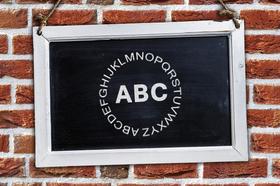Why Private-School Families Should Consider a Community College Start
For families accustomed to the private school environment—smaller class sizes, rigorous college-preparatory curricula and significant tuition investment—the idea of beginning the post-secondary journey at a community college often seems counter-intuitive. Yet in 2025, as higher education costs continue to rise and student-pathways diversify, there are compelling reasons why private-school families should seriously consider a start at a community college.
1. Cost Savings & Financial Flexibility
One of the clearest advantages of starting at a community college is reduced cost per credit hour. Many community colleges charge significantly less than four-year institutions. For students who intend eventually to transfer to a bachelor‐granting institution, beginning with lower‐cost general education courses can ease financial pressure.
Beyond tuition, living at home or commuting locally can reduce room and board expenses in early years, offering families the chance to reallocate resources (for example toward extracurriculars, internships or higher‐level courses) rather than defaulting into full‐residential four-year cost. psecu.com
Furthermore, for families used to committing to private K–12 tuition, the shift in mindset from “high tuition, high cost” to “net cost, strategic choice” is important. As one guide explains: “For private-school families, the net cost mindset matters: what is my cost after grants?”
2. Academic & Support Advantages
Another key reason is strong academic support and flexibility. Community colleges often provide smaller or more personalized foundational classes compared to large lecture halls at four-year universities. This environment can serve as a bridge from high school to higher education, smoothing the transition for students who may benefit from a different pace or additional support. Private School Review+1
For private-school students used to rigorous environments, a community college start does not signal academic compromise. In fact, data show that community college transfers to four-year institutions perform at equal or higher rates in many cases.
3. Strategic “2 + 2” Transfer Pathway
The “2 + 2” model — two years at a community college followed by two years at a four‐year institution — is increasingly viable. Families who originally plan a four‐year degree can begin at a community college, complete general education or prerequisite requirements, then transfer—retaining access to the bachelor’s credential while lowering early cost and debt. edvisorly.com+2San Juan College+2
Moreover, many community colleges have articulation agreements or transfer guarantees with four-year institutions, facilitating smoother credit transfer and admission.
4. Increased Flexibility & Risk Mitigation
For families of private-school students, the goal is often a selective or highly ranked four-year institution, but realities may shift: major interest changes, admissions results vary, or finances evolve. A community college start offers flexibility:
If the student’s interests change, the credits already earned remain meaningful rather than lost.
If a four-year admission is delayed or re-scoped, the student remains on pace rather than sitting out or switching tracks.
For students who wish to explore before committing to a major, the lower-cost environment reduces risk.
As noted in recent commentary, community colleges should be viewed not as a fallback but as “an integral component of a cost-aware, student-centric pathway.” Private School Review
5. What Private-School Families Must Consider
While the benefits are real, private-school families must pay attention to key planning details to ensure a smooth transition and maximise value.
Accreditation & Transfer Quality
Not all community colleges are equal in terms of transfer pathways, accreditation, or alignment with four-year institution requirements. Families should evaluate transfer success rates, articulation agreements, and credit acceptance by targeted four-year schools.
Credit Acceptance & Major Preparation
If the student already has a clear major in mind—especially within STEM or specialized fields—families must ensure the chosen community college offers prerequisite courses aligned with that major and that credits will transfer cleanly. psecu.com
Financial Aid & Net Cost Mindset
Families accustomed to private K–12 tuition assistance may need to recalibrate: federal aid at community colleges (via FAFSA) is structured differently, and private K–12 tuition generally doesn’t factor into aid formulas for higher education.
Social & Campus Experience
For families and students who highly value the four-year residential college experience (dorm life, campus culture, large student body), starting at a community college may delay or alter that experience. But for many students, this is offset by cost savings and a smoother academic transition.
Timeline & Advising
Begin planning early—ideally by the end of sophomore or junior year of high school. Map out which general education courses might be taken in community college, consult advisors about transfer equivalencies, and confirm dual enrollment options if applicable.
Summary Table: Why Private-School Families Should Consider a Community College Start
| Advantage | Why It Matters for Private-School Families |
|---|---|
| Lower tuition & cost | Reduces overall investment and debt burden early in higher education |
| Personalized foundational support | Bridges the transition from rigorous private K–12 to post-secondary learning |
| Transfer pathway to 4-year | Maintains access to bachelor’s degree while managing cost and risk |
| Flexibility & reduced risk | Adapts to changing major, interest or admissions outcomes |
| Early credit via dual enrolment | High school students can earn college credits at lower cost |
Expert Commentary (2025 Update)
In 2025, the momentum around dual enrollment, community college partnerships, and alternative post-secondary pathways is accelerating. As noted in recent writing:
“State-level school-choice expansions … are widening latitude for families to redirect funds into flexible educational options (including community college).”
In the same year, a national study found that students transferring from community colleges to four-year institutions perform at or above expected levels—and in some cases graduate sooner.
For private-school families whose children may target highly selective four-year schools, this is a significant shift: the stigma once attached to community college is diminishing. Indeed, a professional survey of high‐school counselors found that although 61% of private non-parochial schools still view community-college transfer as “very stigmatized,” the data support a strategic and successful role for community-college starts.
Practical Steps for Families
To integrate a community college start into a private-school strategy, consider the following checklist:
Audit your goals – What bachelor’s degree do you target? Which four-year institutions? What budget constraints?
Explore local community colleges – Identify ones with articulation agreements or strong transfer records to your target four-year schools.
Map courses early – By junior year, plan potential general-education or dual-enrolment courses the student could take at community college.
Request transfer-equivalency documentation – For each potential four-year school, verify which community-college courses count toward transfer.
Run financial models – Compare net cost of going four-years directly vs. two years community college + two years four-year institution.
Monitor advising and outcomes – Check community college’s student support services, transfer rates, graduation data.
Stay engaged – Continue working with high-school counsellors, community college advisors and potential four-year transfer offices.
Review annually – Re-visit the pathway each year to adjust if major, interest or institutional targets shift.
Conclusion
For families who have invested in private K–12 education and expect strong academic outcomes from their children, a start at a community college may at first appear as a detour from the traditional path. But when approached strategically, it can serve as a cost-smart, academically supportive, and flexible launch-pad toward a bachelor’s degree—and beyond.
In 2025, with tuition pressures, evolving student interests and more robust community-college transfer systems, private-school families who incorporate a community college start into their planning may find they gain not only in savings, but in agility and student empowerment. The key is adopting the mindset of net cost, transfer readiness, and early planning—and ensuring that the community-college portion is aligned with the eventual four-year goal, rather than treated as a fallback.
With that deliberate strategy in place, a community college start becomes not a compromise but a smart investment in the student’s future.












